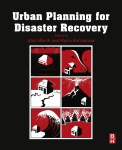

Most ebook files are in PDF format, so you can easily read them using various software such as Foxit Reader or directly on the Google Chrome browser.
Some ebook files are released by publishers in other formats such as .awz, .mobi, .epub, .fb2, etc. You may need to install specific software to read these formats on mobile/PC, such as Calibre.
Please read the tutorial at this link: https://ebookbell.com/faq
We offer FREE conversion to the popular formats you request; however, this may take some time. Therefore, right after payment, please email us, and we will try to provide the service as quickly as possible.
For some exceptional file formats or broken links (if any), please refrain from opening any disputes. Instead, email us first, and we will try to assist within a maximum of 6 hours.
EbookBell Team

0.0
0 reviewsUrban Planning for Disaster Recovery focuses on disaster recovery from the perspective of urban planning, an underutilized tactic that can significantly reduce disaster risks. The book examines disaster risk reduction (DRR), in particular, the recovery stage of what is widely known as the disaster cycle.
The theoretical underpinning of the book derives from a number of sources in urban planning and disaster management literature, and is illustrated by a series of case studies. It consists of five sections, each of which opens with a conceptual framework that is followed by a series of supporting and illustrative cases as practical examples. These examples both complement and critique the theoretical base provided, demonstrating the need to apply the concepts in location-specific ways.